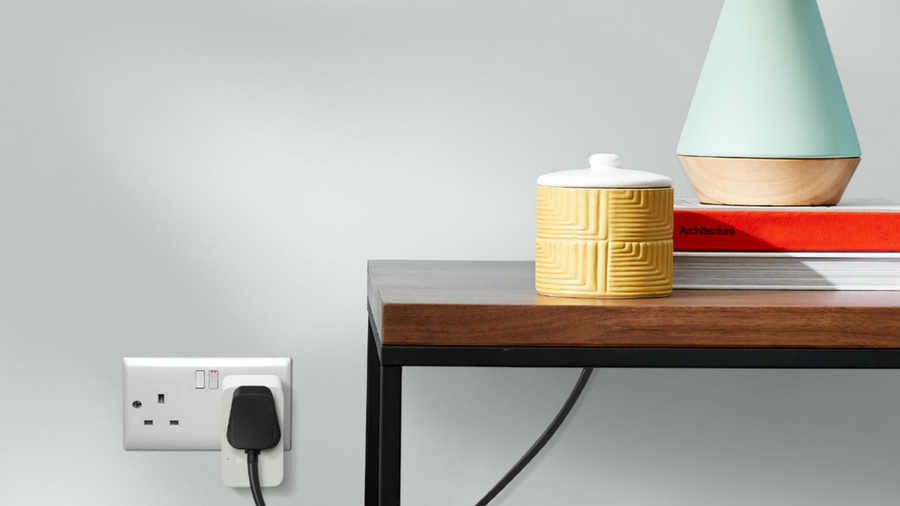This unsung feature made my smart home safer from burglars
Opinion: away mode is better than creating schedules

With life starting to get back to normal following the pandemic, more and more of us are leaving our homes unattended for longer periods of time. I’ve fully embraced trying to get life back on track – I’m going back into the office a couple of times a week, and I’ve booked a holiday for later in the year.
But alongside the excitement of life returning back to normal, I’ve once again found myself worrying about whether my house will be secure while I’m away. I’m quite a security-conscious person, and have home security cameras installed on the exterior of my property, which will alert me if anyone is creeping around outside.
But I’m always looking for any other steps I can take to deter intruders – and many smart plugs, and some smart lights – which are among the most affordable of all smart-home devices – have a little-known feature that can give the impression that you’re at home when your house or apartment is empty.
More sophisticated than a schedule
Long before smart-home gadgets started to become the norm, when I was leaving the house empty for long periods of time I relied on old-fashioned timer plugs to make lights in the house switch on and off at set times to simulate occupancy and hopefully deter burglars. It was something my dad did, and it seemed sensible for me to use the same method.
Even though I eventually upgraded to smart light bulbs, which I used on a schedule, so there was no need for the timer plug, there was a little snag in this plan. Anyone watching the house would have figured out very quickly that the lights switched on and off at the exact same time every day, making it clear that the house is likely to be empty – a fact that’s even raised by Harry, one of the two ‘wet bandits’ in the Home Alone movies.
Really what I needed was a way of getting the lights to turn on and off at random times throughout the day and at night, making it less obvious that the house was unoccupied. And such a feature does, in fact, exist: it’s called away mode, and it’s available on many smart plugs, and some smart light bulbs.
Away mode randomizes the times the appliance connected to the smart plug switches on and off, making it ideal for connecting a lamp to the smart plug to simulate occupancy. It’s available on the majority of smart plugs on the market right now, although there are a couple of notable exceptions, including Eve Energy Smart Plug and the Amazon Smart Plug.
Get daily insight, inspiration and deals in your inbox
Sign up for breaking news, reviews, opinion, top tech deals, and more.
Each smart plug differs slightly in how you enable the feature, and at how many points in the day away mode can be used. I’ve got the TP-Link Kasa Smart Wi-Fi Power Strip KP303, and to set up away mode I need to select the smart plug from the main screen in the companion app, and then choose ‘Away’ from the four options at the bottom of the screen.
I was able to assign a start and end time for away mode to operate, as well as select on which days it was activated (on this particular device, away mode can’t be set to activate at multiple times during the day). Once away mode is activated, the appliance connected to the smart plug – in this case a lamp which I’d placed in a window at the front of the house, would be switched on and off at random times during the away period.
It’s not just smart plugs that offer away mode – some smart light bulbs, including those from Philips Hue and WiZ, offer the same function, so if you already have one of these there’s no need to invest into additional gadgets. You’ll find away mode in the settings menu.
I’m in the UK, and at the time I’m writing this it’s still getting dark fairly early, so I’m making use of away mode on the days when I’m in the office, as well as when I pop out for the evening or go away for longer periods. It’s a simple, affordable and effective way to upgrade your home security setup, and throw would-be intruders off the scent.
Now want to get your hands on a smart plug or smart light to boost your home security? Then check out the best deals available right now.
- Check out even more great smart home device deals
Carrie-Ann Skinner was formerly Homes Editor at TechRadar, and has more than two decades of experience in both online and print journalism, with 13 years of that spent covering all-things tech. Carrie specializes in smart home devices such as smart plugs and smart lights, as well as large and small appliances including vacuum cleaners, air fryers, stand mixers, and coffee machines. Carrie is now a copy editor at PWC.
